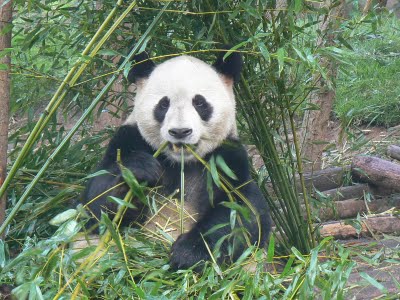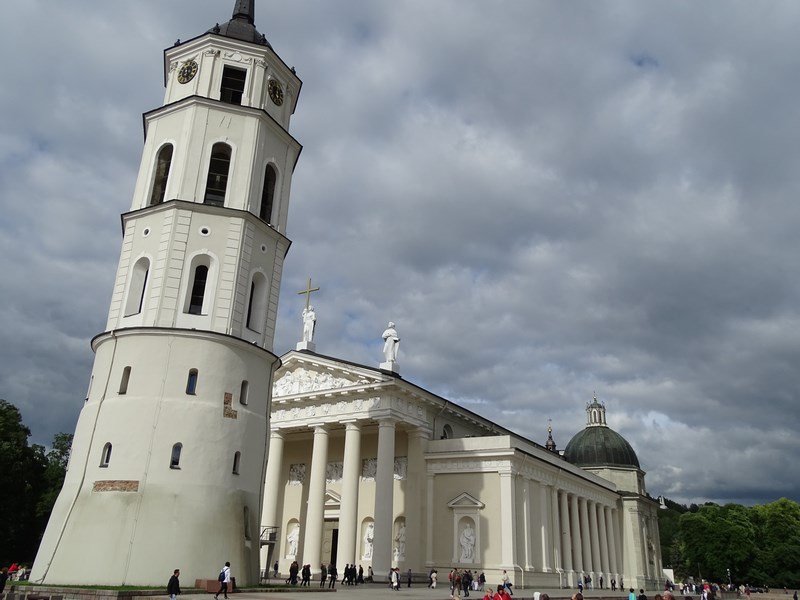Chengdu – Between Pandas and the Sichuan Opera
It is no longer a secret for anyone – China is becoming a greater economic, political and military power by the day. Many of you may have seen (even only on TV) or heard about the incredible cities that are being built in Shanghai, Guangzhou or Beijing, but there is also the image that everything west of the coast is in decay, extreme poverty, third world country. A few years ago, on the way to Tibet, I visited the capital of the southwestern province – Chengdu, a “town” of several million inhabitants, the capital of the Sichuan province. I was expecting hovels and poor people, but, in exchange, we were surprised in this part of China, too… Unfortunately, in the spring of 2008, the Sichuan province was hit by a strong earthquake. Although more than 4,000 people died in Chengdu, and situated only 50 kilometers away from the epicenter, Chengdu did not suffer major damage.
The Sichuan Province is situated in the extreme south-west of China. It is bordered by Tibet, it is, basically, here, that the first bastions of the Tibetan Plateau begin to rise and the Tibetan culture is present in Chengdu, too, by means of their Tibetan neighborhood – a kind of Tibetan town in China. As everywhere in China, history is measured not in decades or centuries, but in millennia. Chengdu was already the capital of the Shu kingdom about 2500 years ago and was a prime commercial point. Here, the Kuomintang of Chiang Kai-shek was evacuated in 1937 after the Chinese invasion, bringing along thousands of businessmen and culture men who founded many of the today’s institutions of the metropolis. Chengdu was also the last stronghold of Kuomintang in Taiwan before the withdrawal to Taiwan.
But, today, Chengdu is known throughout China not because of the nationalist opposition, but out of three reasons: teddy pandas, the Sichuan opera and the extremely spicy food – perhaps the spiciest in East Asia. Actually, the whole China is populated with restaurants where the Sichuan “spicy food” enthusiasts can eat. So , you can always take a Chengdu Tour not only for sights, but also for cuisine
I had the first revelation that the “bottom of China” is not as backward as I had thought on the airport. A huge, modern airport, probably recently built, inter-continental flights such as the KLM flight from Amsterdam landing on it. Then, huge, suspended roads, wide boulevards, highways built long before the area got overcrowded with cars as in eastern China. Although far from the airport, I arrived in town quite soon and I stayed at Sim’s Cozy Guesthouse. Two steps away from the Old Town area, now restored and already a tourist attraction, Sim’s Cozy Guesthouse is a real inn of the backpackers who arrive in this region and especially those on their way to Tibet. The place was open by an unusual couple – he, from Singapore, she, Japanese, both travel enthusiasts who met on the roads of Asia and who eventually settled in Chengdu, where they opened this sanctuary of travelers – practically, they help out with anything – a bicycle, a restaurant recommendation, the panda tour, a show ticket, a plane ticket or obtaining a permit to visit Tibet. Unfortunately, Sim and Maki sold the place and left traveling the world, but I understand the standards are the same.
In fact, with Sim’s help, I arranged the Chengdu tour day – visiting pandas in the morning and an evening at the Sichuan opera. At 10 am, while it was still cool, I already was at the “Panda Park” for a Giant Panda tour. However often you may have seen them on TV or online, you cannot help being impressed by the funny-looking and stout pandas. Extremely gluttonous, and sleepy-heads, they spend their days sleeping and eating, often forgetting the duty of perpetuating their species, so the Chinese have created a very modern panda center to study them and to perpetuate this species which is an undeniable symbol of China. The panda centre has two components – a museum that would be interesting if it were more modern and a panda park which is absolutely gorgeous… everywhere pandas eating bamboo and watching the crowd of visitors with their little inquisitive eyes. If the adult pandas are lazy, decent and patient, the panda teddies are more playful … they climb, fight, have real Greek-Roman wrestling … or, rather, Pando-Roman ones. Also, we found that there is one more obscure species of panda bears here… some red pandas who rather look like marmots… you know, those that fold chocolate in Europe… but the Chinese caretakers have assured us that they are also pandas. And finally, for a price of around 100 euros (1000 yuans), you can even touch a panda and take him in your arms for photos. And do not think that there are no people willing to do this in “pauper” China… on the contrary, there was a huge queue.
After a few hours in the middle of nature, it’s time to get back into town. I cannot say that Chengdu has some architectural interest. As everywhere in China, massive blocks with a glass façade have appeared, being like carbon copies not only in Chengdu, and Guangzhou, but also in Tianjin, everywhere. The central square is a playground for children and a resting place for the elderly. It’s still from the Tienanmen “family” … the square is dominated by a huge statue of comrade Mao in front of the Museum of Science and Technology, and the square is really huge.
The evening was dedicated to culture … but not every culture, but the famous Sichuan opera. When you hear the word “opera”, you start thinking of something quite fancy, rather symphonic, a bow tie to wear. No way. The Sichuan Opera magazine is a real entertainment show – with dancers, circus elements, comedians, a medley of colour, rhythm and music, combining modern elements with a lot of tradition. And if you also get the translation of what is said (there were monitors in the room that translated dialogues into English and the presentation of the moments was done bilingually, showing that the place was interesting enough for tourists), it is really an agreeable show.
The next morning at 5, some powerful blows on the door suddenly woke me up. It was Sim, the owner, who had come to wake us up… we were supposed to catch a plane to Lhasa for a Tibetan adventure…
How to reach Chengdu
With every day that passes, Chengdu becomes an important business destination. KLM was the first European company that opened direct flights from Amsterdam to Chengdu and it flew on and off. Now, it is on, but it costs a lot ! Etihad has some pretty decent fares via Abu Dhabi, so you should check them. Otherwise, you may catch a flight to Beijing, Shanghai or Hong Kong and from there have numerous flights or trains to Chengdu. If you fly to Hong Kong, it is best to go by boat to the People’s Republic, in Shenzhen and take a flight from there, it is much cheaper than from Hong Kong that is still considered as “foreign”.
Where to sleep in Chengdu
There are many hotels in Chengdu, most of them being oriented towards businessmen. Personally, I stayed in Sim’s Cosy Guesthouse. They organize tours at minimum costs around the Sichuan Province and help you with the Tibet Tourist Permit.
Chinese Visa
You need a visa for the People’s Republic of China, but you do not need one for Hong Kong. The visa needs to be obtained in advance from a Chinese Embassy. If you reach Hong Kong without a Chinese visa, don’t worry… there are plenty of places in Chungking or Mirador Mansions ready to help.
What to eat
The Sichuan cuisine is famous in China and not only … it is famous for being very spicy … So be careful what you eat, you might set your mouth on fire.
Pictures of Chengdu:
The Chengdu Airport
The Sichuan Opera
The Sichuan Opera
The Sichuan Opera
The Sichuan Opera
The Sichuan Opera
The Sichuan Opera
The Sichuan Opera
Chengdu downtown
The great leader
The less famous red pandas
The 100 euro photo with a panda













